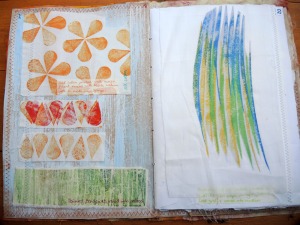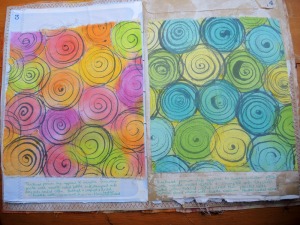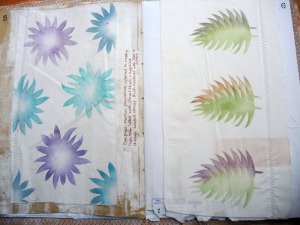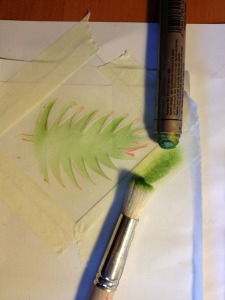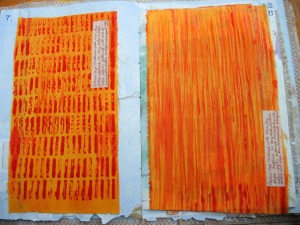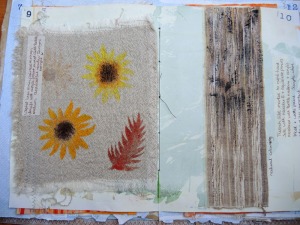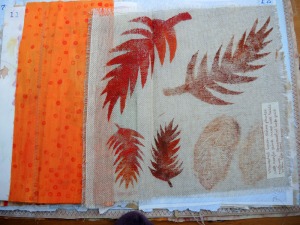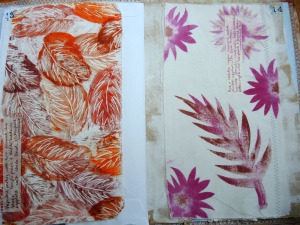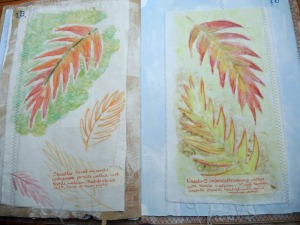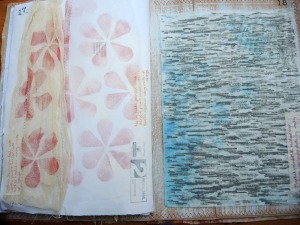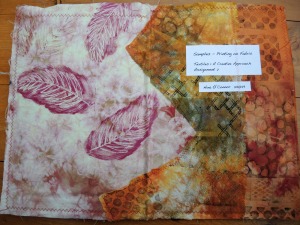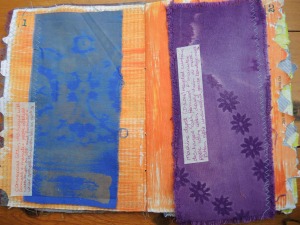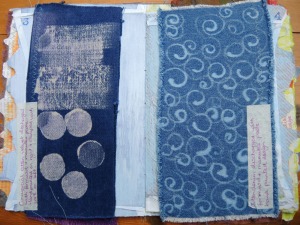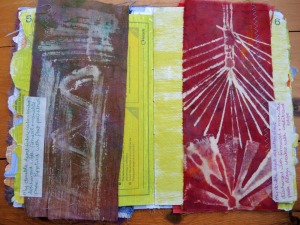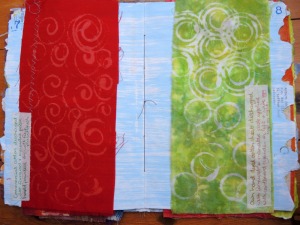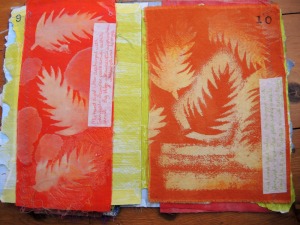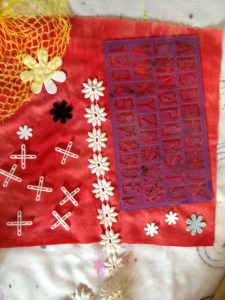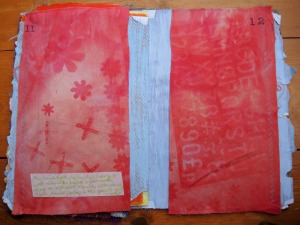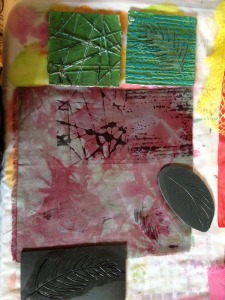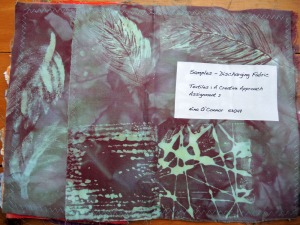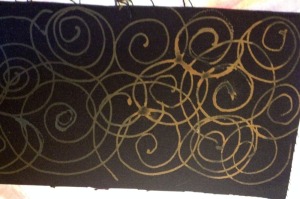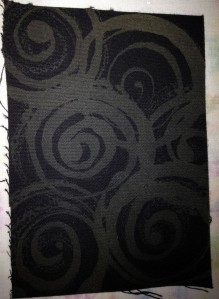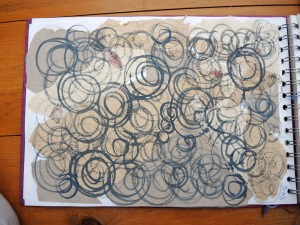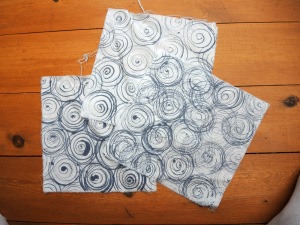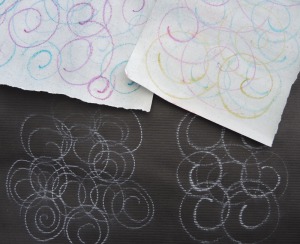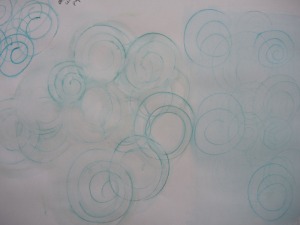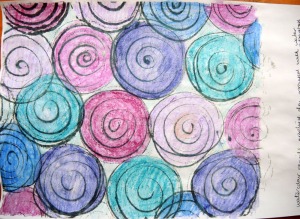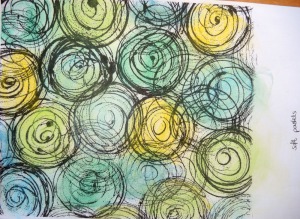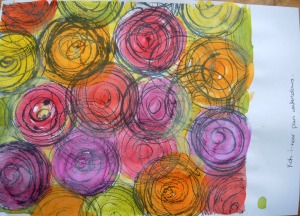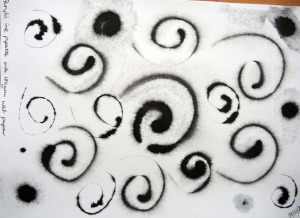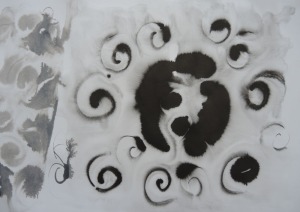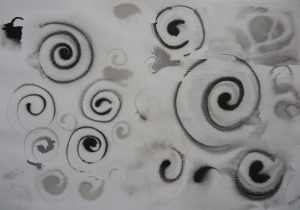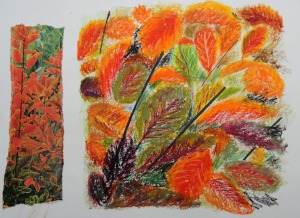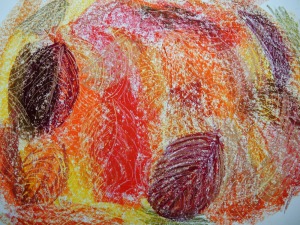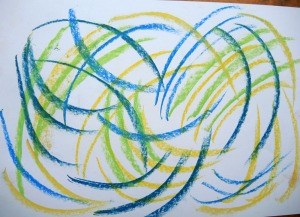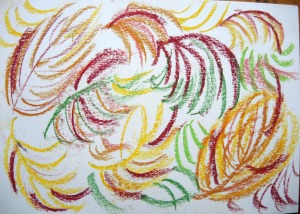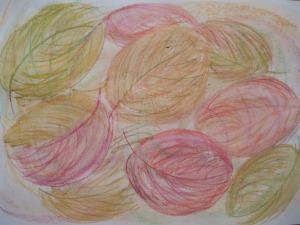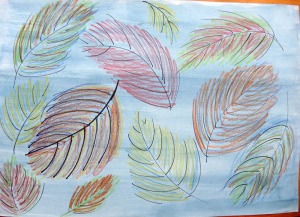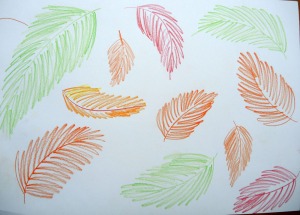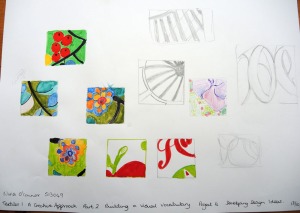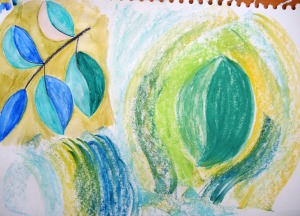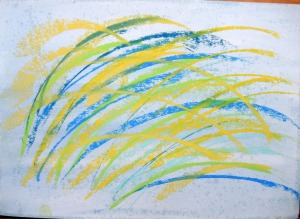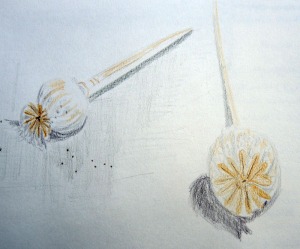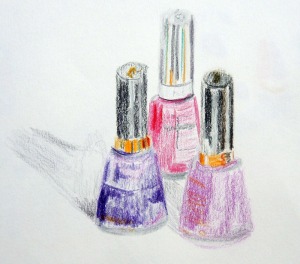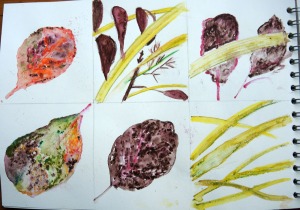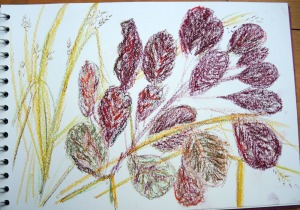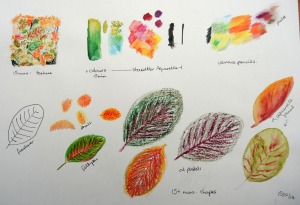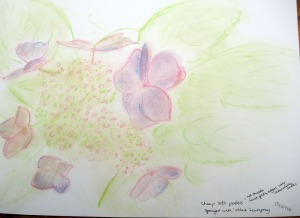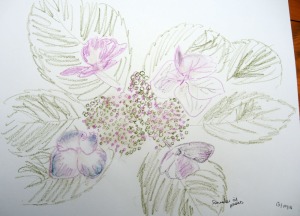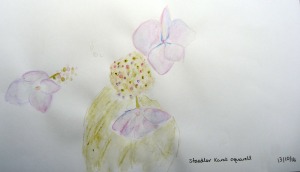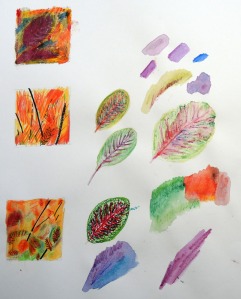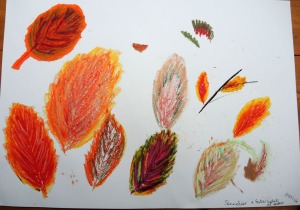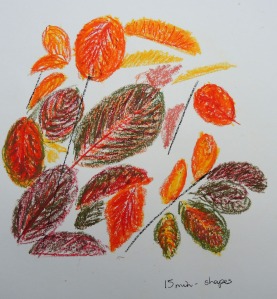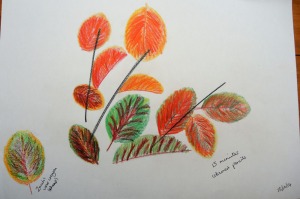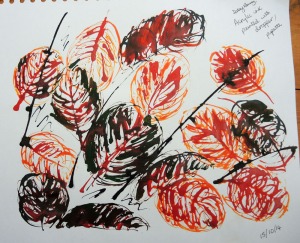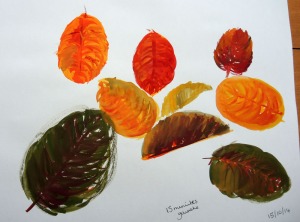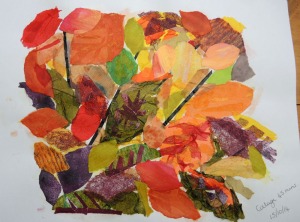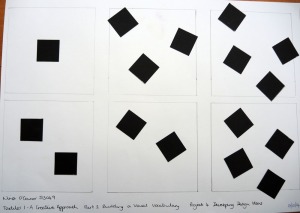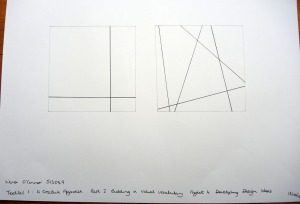Left: top three Silk cotton printed with acrylic paint mixed with textile medium with a make up sponge.
On this fabric, the texture from the printing plate is as clear as printing on paper and gives interest.
Left: bottom. Bondaweb painted with acrylic paint, allowed to dry and ironed to calico.
Right: photograph of soft pastels printed on heat transfer paper for light fabrics (red grid) and ironed onto muslin.
I think the heat transfer paper is effective and could prove useful in future.
The spirals were produced by using thickened procion dye, thinned to be used through a needle nosed bottle. The spiral was ‘drawn’ onto an acrylic circular plate and stamped onto dry soda soaked cotton. It was batched, washed and dried and then painted. The left was painted with Jacquard Dye-na-flow, heat set, washed and dried. I didn’t think to use a water-based resist or to dry each colour between applications so the colours have spread. I quite like the effect but would like to try dye-na-flow with water-based gutta to see how effective it is. I like the Dye-na-flow, the colours are vibrant and the fabric has a soft handle. The right hand side was painted with acrylic paint mixed with textile medium, heat set, washed and dried. I like the colours which I was trying to replicate from my previous work, but the fabric is stiff and this method would not suit something that needed a soft handle.
Left on cotton and right on cotton poplin. Both Markal paintsticks applied to masking tape then lifted with stencil brush and applied through acetate stencil. The brush was moistened with zest it solvent, which was a serendipitous discovery. I learned from Susan Stein’s book that Markal paintstick brushes can be cleaned with zest-it solvent (I had been wondering how to clean the brushes and it hadn’t occured to me that a solvent would be required!). Having cleaned my brush before starting, I realised that the trace of solvent left on the brush transformed the paintstick into something that could be applied with subtlety and really like the effects created through the above stencils. I already appreciated the lovely creamy texture and pigment of the paintstick when used on paper and although I could draw with it on fabric, didn’t find it very flexible. I am now convinced that they are a very versatile addition to my toolbox!
The above cotton poplin is printed with procion dye thickened with manutex pasted applied to dry soda soaked cotton poplin, patterned with the end of some corrogated plastic on the left and with the edge of a credit card on the right. Because the fabric is soda soaked, the dye takes quickly. The paler orange was then scraped across the surface with a credit card. The fabric then needs to be wrapped whilst damp without touching other pieces and left overnight. Then rinsed and washed as normal, resulting in fabulous colours and a soft handle.
This is a really versatile technique, although potentially messy to set up if working in your spare bedroom!
Left: Washed linen scrim painted through stencils with acrylic paint mixed with textile medium. Unsuccessful Neocolour II crayons top right.
I love the washed linen scrim and like the leaf print because it seems right for the fabric.
Right: Tussah silk top half marked with neocolour II and aquarelle pencils moistened with textile medium and acrylic black and white paint. This sample was produced as suggested where colour is less important. The marks have added texture but I love the Tussah silk as it is and think I could have better demonstrated embellishing/extending the surface quality of the fibre and structure of the cloth had I chosen differently.
Left: Further example of cotton poplin printed with procion dye thickened with manutex pasted & applied to dry soda soaked cotton poplin. This was patterned with the end of a cotton bud.
Right: Unwashed linen scrim painted with acrylic paint mixed with textile medium. Unsuccessful lino print bottom left.
Love the linen scrim washed and unwashed, although unwashed it has a lot of sizing and its shrinks and changes considerable on washing. Love the leaf prints as they work well with the scrim and in those colours. The lino prints didn’t work well as the fabric was too textured.
Left: Cotton poplin printed with two easycut lino blocks. Acrylic paint and textile medium applied with coarse brush. Jacquard lumiere in metallic copper also applied.
Like the pattern, texture and colours. The fabric paint was more transparent than the acrylic paint and textile medium and when heat set and washed doesn’t show up as much as the other paint. The material has a reasonable handle but not as soft as it could be with other methods.
Right: Lightweight cotton. Pink and metallic copper Jacquard textile paint applied with brush through acetate stencils. Less successful print in top right corner. Not enough paint used and stencil turned and used twice which didn’t work well.
Quite like the magenta flowers against the white and the texture of the leaf .
Left: Cotton poplin decorated wit Staedler karat aquarell watersoluble pencils moistened with textile medium.
Right: Neocolour II watersoluble wax crayons moistened with textile medium.
Both heat set with iron and machine washed.
Both the pencils and crayons work on smooth fabric but neither are very exciting to me in this example.
Left: Cotton scrim & nylon tulle printed with acrylic paint mixed with textile medium using make up sponge.
Both worked well and would have potential for layering.
Right: Markal paintstick rubbed over textured wallpaper plate on weakly hand dyed cotton sheeting. Heat set with iron, washed and dried.
Although tricky to use initially, Markal paintsticks are very versatile. I found it best to remove the skin with a sharp scalpel which was much less wasteful than using a paper towel which is often recommended. It was helpful to know brushes could be cleaned and colours mixed using a solvent.
The fabric used for the cover was a mixture of samples combined. The right hand strip of cotton poplin is printed with easy cut lino blocks cut to represent footprint textures, using watersoluble block printing ink. the central piece uses similar blocks and is hand dyed calico bandage. The left hand is a piece of hand dyed fabric printed with jacquard textile paint brushed onto an easy lino cut block.
All hand dyed fabric used in all the samples has been dyed by me.
I have thoroughly enjoyed printing and look forward to developing my knowledge and experience further.

